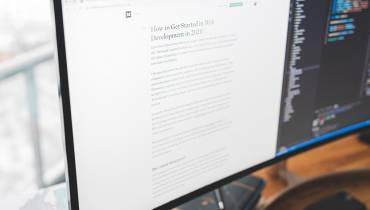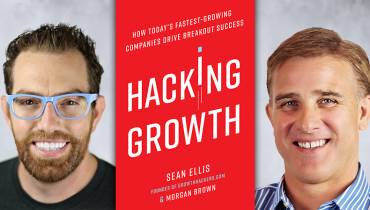4 Ways Workforce Data Intelligence Leads to a More Optimized Workplace

As governments and businesses worked to respond to the coronavirus global pandemic, and continue to face other major challenges post-Covid, this is a timely reminder that flexibility is an essential part of running an organization.
Even in a hybrid work environment, the unpredictable nature of the business world and people's lives today means that organizations will need effective workforce management methods and tools that are flexible and intelligent enough to make success possible.
It is as important now as ever to understand that data is key to getting a head during current changing times, as well as understand and look at how some of the data requirements that might seem burdensome can in fact be a source of optimization.
Changing attitudes on workforce data
The coronavirus pandemic forced a sea-level change in how operations managers understand their workforce and workload, and plan their operations.
While traditional workforce management data was based on looking around the office to get a sense of things and historical data around skills, schedules, inventory, and so forth, the pandemic left many operations managers in the dark as their teams worked remotely.
Many organizations had already adapted to this change, implementing new methods of understanding productivity and performance and managing employees that were effective when working from home.
As hybrid working becomes the norm, the big question for managers remains: "Where are my people most productive?" Working from home is the preferred option for many employees, but not all of them – and not all types of work can be adapted to remote working.
More recently, other layers that present a challenge to operations managers have emerged. One such layer is eligibility – as in, who is allowed to work in an office and who can work remotely?
Across every industry, management teams are grappling with this question of eligibility. This can be taxing for operations managers as it means more data to consider, more lenses through which to look at workloads, more resources to pull, and availability.
But while there may be initial pain associated with responding to all the new challenges and requirements in the present labor market, the challenges present an opportunity to create a more optimized future of work.
Key ways workforce data makes business life more manageable

Collecting and. leveraging comprehensive workforce data can make business life more manageable. Here're four ways investing in workforce data contributes to a more productive workplace:
1. Workforce data helps to create a well-balanced and engaged workforce
It's no secret that your employees will have preferences for where they work. Gathering data to understand those preferences and factoring that into your planning can help ensure your employees are engaged in their work, improving productivity, well-being, and retention.
If you can layer that information with more data on employees' performance in different settings and environments, you can have another aspect of the picture to help you balance your workforce.
Of course, that data may need a third layer - who is eligible to work in which locations – and that needs to be handled correctly so that you comply with any local or national laws that are in force or will come into force.
2. Workforce data helps to reduce costs
As organizations move to hybrid working models, this reduces the need for office space, which inevitably reduces costs associated with the office, such as the cost of rent, power, heating, water, insurance, and facilities.
But the cost argument goes beyond the maths of office space. Armed with the correct data, organizations can ensure their people are working where they are most productive and happiest. That can reduce costs, mainly in decreased absenteeism, which costs organizations thousands of dollars per year.
The reduced cost savings could be used to help balance the books in a tight year – or it could mean that funds are available for training and coaching programs that improve employee performance or even on rewarding high-performing employees.
3. Workforce data helps to broaden the scope for your talent pool
Although gathering and analyzing more data might feel burdensome, the truth is that it enables you to implement hybrid working models effectively and with confidence that they will deliver.
And that means that you gain all the benefits of a hybrid work environment, which includes a vastly expanded talent pool.
With minor roles a part of the norm, you can hire anyone from any country, allowing you to create more diverse and talented teams than you could before.
4. Workforce data can help make a positive contribution to sustainability efforts
Most organizations are considering reducing their carbon footprint and becoming more sustainable. If your organization uses data to support a hybrid workforce, you should see a reduction in emissions on multiple fronts.
You may see reduced emissions as fewer employees commute and those who commute less. You may see a reduced need for office lighting and heating – not to mention a reduction in office waste – as footfall in the office decreases.
The workforce data you gather to enable all this will help demonstrate a contribution to your organization’s emission reduction program – or could even form the basis of starting one if you haven't already.
In conclusion: Availability is the new eligibility
It's essential to start thinking about workforce data in a different light. Eligibility is arguably the most pressing (and stressing) requirement for organizations right now, and the temptation can be to find a solution that focuses solely on eligibility.
But to take a broader view, eligibility data isn't that different from the other data you're gathering about employees and where they can work. You're trying to build a picture of where your workforce is based – and eligibility is just one more layer on top of others, such as where your employees prefer to work and where they are most productive.
When you consider the challenge in those terms, the uses for the data you're gathering suddenly expand. We're calling the blanket term for this data "availability." Of course, gathering availability data – and indeed all the workforce intelligence that makes the four things I've mentioned possible – is the trick.
In a hybrid world, that data needs to be gathered automatically, wherever employees are based, in real-time to give managers as much detail as possible. But at the same time, organizations need to find solutions to prevent managers from drowning in data, which can prevent them from getting on with their jobs.



















